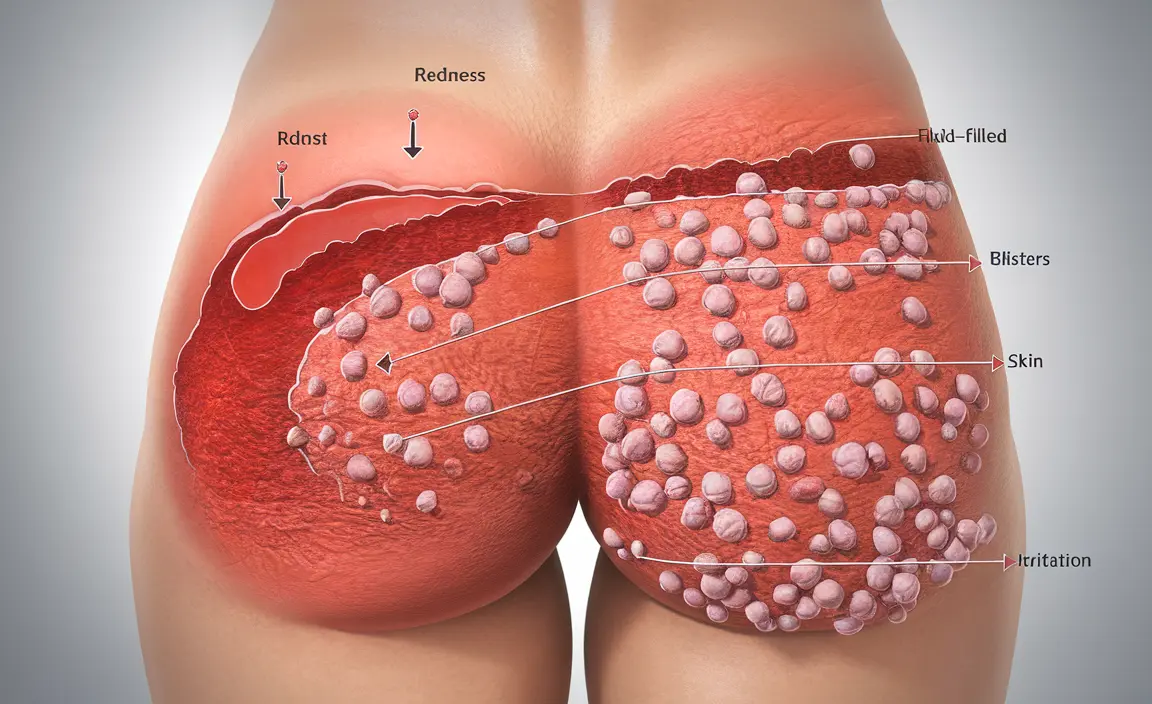Developing a shingles rash on the buttocks can be both painful and concerning. This condition, caused by the reactivation of the varicella-zoster virus (the same virus that causes chickenpox), requires prompt attention and proper care to manage symptoms and prevent complications. Understanding the signs, treatment options, and preventive measures is crucial for anyone experiencing or at risk of developing this condition.
When shingles affects the buttocks region, it can significantly impact daily activities and quality of life. This comprehensive guide will help you recognize early symptoms, understand treatment approaches, and learn essential prevention strategies.
Early Signs and Symptoms
Recognizing the early signs of shingles on the buttocks is crucial for timely treatment. Initial symptoms typically develop in stages:
- Tingling or burning sensation in the affected area
- Increased sensitivity to touch
- Mild to severe pain before any visible rash appears
- Redness or skin irritation
- Small, fluid-filled blisters that form in a strip or cluster
These symptoms usually appear on one side of the body and may extend to nearby areas such as the lower back or upper thighs.
Diagnosis and Medical Treatment
Healthcare providers typically diagnose shingles through a physical examination and evaluation of symptoms. In some cases, laboratory tests may be necessary to confirm the diagnosis.
Common Treatment Approaches
Treatment typically involves a multi-faceted approach:
- Antiviral medications (such as acyclovir or valacyclovir)
- Pain management medications
- Topical treatments to reduce discomfort
- Regular monitoring for potential complications
Starting treatment within 72 hours of symptom onset can significantly improve outcomes and reduce the risk of complications.
Managing Pain and Complications
Shingles on the buttocks can lead to various complications, with post-herpetic neuralgia (PHN) being the most common. This condition causes persistent nerve pain even after the rash has healed.
Prevention of Complications
To minimize the risk of complications:
- Follow prescribed treatment regimens strictly
- Keep the affected area clean and dry
- Avoid scratching or irritating the rash
- Monitor for signs of infection
- Attend all follow-up appointments with healthcare providers
Prevention and Contagion Risk
While you can't spread shingles itself, the virus can cause chickenpox in people who haven't had it or haven't been vaccinated. The most effective prevention method is vaccination with Shingrix, recommended for adults 50 and older.
Home Care and Relief Measures
Several home remedies can help manage symptoms:
- Cool compresses to reduce inflammation
- Loose-fitting, breathable clothing
- Calming oatmeal baths
- Over-the-counter calamine lotion
- Proper hygiene practices
Frequently Asked Questions
What are the early symptoms of shingles rash on the buttocks? Early symptoms include tingling, burning sensations, and sensitivity in the affected area, followed by redness and the development of fluid-filled blisters in a strip or cluster pattern.
How is shingles on the buttocks diagnosed and treated? Diagnosis typically involves physical examination and possible laboratory testing. Treatment includes antiviral medications, pain management, and topical treatments, ideally started within 72 hours of symptom onset.
Can shingles on the buttocks cause long-term nerve pain or other complications? Yes, shingles can lead to post-herpetic neuralgia (PHN), causing persistent nerve pain after the rash heals. Other possible complications include bacterial skin infections and scarring.
Is shingles on the buttocks contagious and how can it be prevented? While shingles itself isn't contagious, the virus can cause chickenpox in susceptible individuals. Prevention includes vaccination and maintaining a strong immune system.
What home remedies and self-care tips help relieve shingles rash on the buttocks? Effective home remedies include cool compresses, calamine lotion, oatmeal baths, wearing loose clothing, and maintaining proper hygiene. These should be used alongside prescribed medical treatments.




